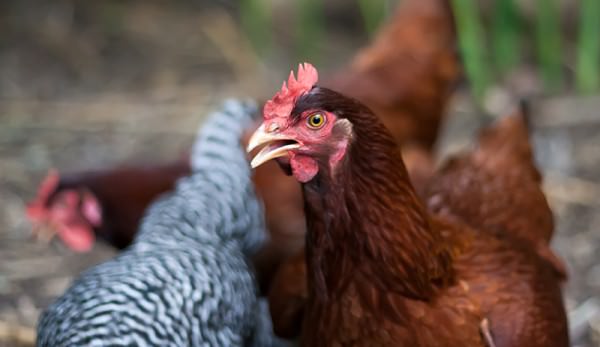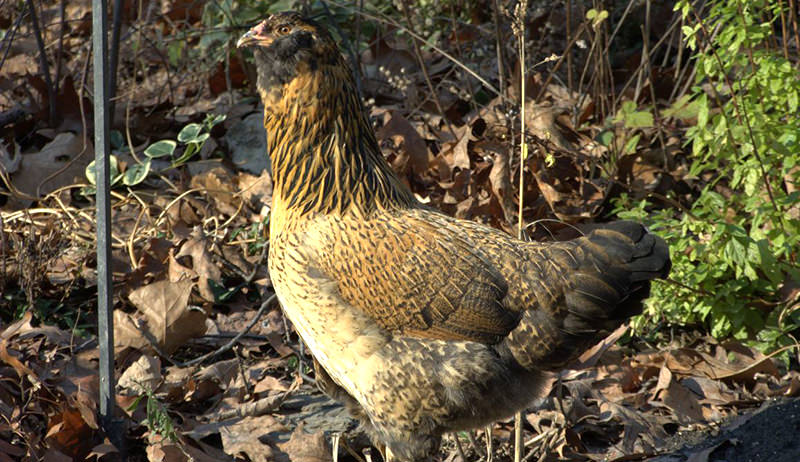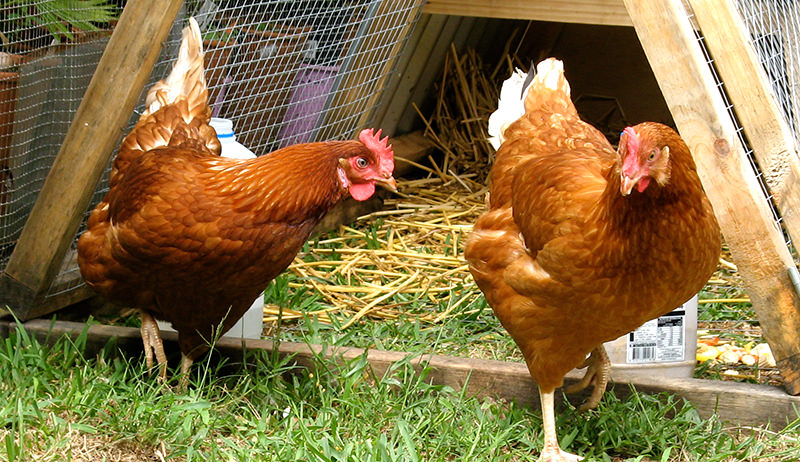
You watch them wearing their silky feathers on the red carpet. You read about them in the gossip-chick tabloids (such as in Chickens magazine). You see them being followed by the farmyard paparazzi. Who are these hot chickens everyone is talking about, anyway?
Dozens of chicken breeds are available from hatcheries in United States, giving chicken keepers an overwhelming choice in bringing birds home for meat production, egg production and the sheer enjoyment of caring for a flock. Now that spring has sprung and poultry fans are making plans to fill their coops, we started a quest to uncover what it is that makes celebrity chicks so likable. Without further ado, our picks for the most-desirable chickens of 2016 are …
Drum roll, please!
Rhode Island Red
Starring Role: dual-purpose meat and brown-egg production, laying 200 to 300 eggs per year starting as soon as 6 months of age
Favorite Designers: RIRs (pictured above) have dark-red feathers with some black or green in the main tail and wing feathers. They can have single or rose combs. Roosters weigh in at 8½ pounds and hens at 6½.
Bird Bio: Recognized by the APA since 1904, this breed was developed in Rhode Island and Massachusetts. Rhode Island Reds have an “Old Type,” heritage variety and a commercial variety. Both are known as dual-purpose birds with excellent egg-laying ability. The Livestock Conservancy lists the heritage variety on its Recovering list, and this breed is also listed on the Slow Food International Ark of Taste. Rhode Island Reds are hardy in a range of climates and thrive as foragers.
Chicken Chat: “Since the 1940s, the Rhode Island Red has been selectively bred for more efficient egg production, becoming smaller, lighter colored and less broody as a result,” according to Slow Food USA, which highlights the need to conserve the Old Type, heritage strains meant for dual-purpose chicken keeping.
Ameraucana

Starring Role: laying pastel blue-green eggs
Favorite Designers: Ameraucanas are seen in varying colors and patterns, including Black, Blue, Blue Wheaten, Brown Red, Buff, Silver, Wheaten and White. They always have beards and face muffs and never have ear tufts, according to the American Poultry Association’s Standard of Perfection.
Their slate-blue legs and red ear lobes set them apart. Adult roosters weigh in at around 6½ pounds and hens at 5½ pounds. Their pea combs and small or nonexistent wattles make them cold-weather resistant.
Bird Bio: Ameraucanas are the bearded, tailed strain of the colorful Araucana chicken breed from Chile. Do not confuse these two breeds: Araucanas have similar color patterns and also lay colorful eggs, but they have ear tufts and are rumpless—aka, they don’t have tails. There’s a lot of misinformation about this breed—even from sources as reliable as cooperative extensions—that lump Ameraucanas, Araucanas and Easter Eggers together as one.
This breed has come a long way to make this list. In 1979, the national breed club focused on bantams and had only 28 members. Full-size Ameraucanas were recognized by the APA in 1984, making them one of the newest recognized American chicken breeds.
Chicken Chat: “This breed and others that are similar (Araucanas, Olive Eggers, Easter Eggers, etc.) are a favorite as a novelty on the farm,” says Kaydee Geerlings-Perez, of Townline Poultry Farm. “People are always interested in their beautiful shell color. The chickens themselves vary in plumage coloring and can be very lively, which makes them interesting to have in a backyard flock all around.”
Australorp

Starring Role: dual-purpose meat and brown-egg production, laying 200 to 280 eggs per year
Favorite Designers: Australorps are always seen sporting black feathers that have a green sheen. Expect adult roosters to weigh around 8½ pounds and hens about 6½.
Bird Bio: Once known as Australian Laying Orpingtons, these natives of Australia do well in winter and summer, continuing to lay year-round. An Australorp holds the world record for eggs laid in a year with 364 eggs in 365 days, according to The Livestock Conservancy, where it is listed as a heritage breed on the Recovering list. Australorps continued to be developed with egg-laying in mind, while Orpington breeders were more interested in meat characteristics, so the two are now separate breeds. The Australorp was recognized by the APA in 1929.
Chicken Chat: The Australorp is a favorite among pastured-poultry keepers because of its hardiness and its active, but relatively docile, temperament.
Barred Plymouth Rock

Starring Role: dual-purpose meat and egg production, laying about 200 brown eggs per year
Favorite Designers: This all-American breed sports feathers that have defined, parallel bars of white and dark coloring. Males are lighter in color than females. They have a bright-red single comb with five evenly serrated points, front and rear shorter than the middle. Their faces, wattles and earlobes are also bright red. Chicks get their feathers quickly, and these birds are cold-hardy, though their combs can be prone to frostbite in extreme cold. Hens weigh 7½ pounds and roosters weigh 9½ pounds.
Bird Bio: Barred Rocks are a color variation of the Plymouth Rock, which was first exhibited in 1849 in Boston, Mass. They then went underground and reemerged as a slightly different breed 20 years later. (The APA recognizes other Plymouth Rock color varieties as White, Buff, Partridge, Silver Penciled, Blue and Columbian.) Barred Plymouth Rocks were accepted by the APA in 1874. They are on currently on The Livestock Conservancy’s Recovering list of heritage chicken breeds.
Chicken Chat: Until World War II, the Plymouth Rock was the most popular breed in the United States and was one of the foundation breeds for the broiler meat industry in the 1920s.
Cornish Cross

Starring Role: fast growth and efficient meat production
Favorite Designers: The Cornish Cross chicken is white and has limited feathering.
Bird Bio: The Cornish Cross breed was developed in the 1950s as the broiler-
production industry moved into confinement operations.
In “Poultry Genetics for Pastured Production” by Anne Fanatico, the program specialist for the National Center for Appropriate Technology, and Skip Polson, a program consultant for Heifer International, the authors state that, “Since then, the conventional poultry industry has genetically refined them for rapid growth, efficient feed conversion, broad-breastedness, limited feathering (for ease of plucking), and other traits considered desirable for rearing very large numbers of birds in confinement.”
Cornish Cross birds are commonly chosen for pasture production, as well, though they require careful management, as they are prone to overeating, heat stress and structural issues related to their rapid growth.
Chicken Chat: “These are the meat birds that have been bred specifically
to grow quickly with an efficient feed conversion for tender meat,” Geerlings-Perez says. “Most people raise them for eight to 10 weeks.”
Easter Egger

Starring Role: laying 200 to 280 eggs per year that range in color from pale blue to dark blue and shades of green, brown and pink
Favorite Designers: Easter Eggers are hybrids and do not follow traditional color patterns. They can be found in all range of colors from white to black and striped feathers to solid. They have a pea comb and are cold-hardy. Hens weigh about 5½ pounds, and roosters are about 1 pound heavier.
Bird Bio: The Ameraucana Breeders Club defines an Easter Egger as “any chicken that possesses the blue-egg gene but doesn’t fully meet any breed descriptions as defined in the APA and/or [American Bantam Association] standards. Further, even if a bird meets an Ameraucana standard breed description but doesn’t meet a variety description or breed true at least 50 percent of the time, it is considered an Easter Egg chicken.” Different hatcheries produce their own varieties of Easter Egger chickens—often the result of crosses between Ameraucanas and Araucanas. This is not a breed recognized by the APA.
In addition to their worth as a laying bird, the meat is delicious and it has a similar taste to quail.
Chicken Chat: Easter Egger chickens have a genetic beak issue called scissor beak. About 1 percent of chicks have a top beak and bottom beak that don’t align. The condition ranges in severe and disabling to barely noticeable.
ISA Brown

Starring Role: laying as many as 320 brown eggs per year
Favorite Designers: ISA Browns do, in fact, have brown feathers. They have a single comb.
Bird Bio: ISA Browns (ISA stands for Institut de Sélection Animale, the company which developed the hybrid) were developed more than 30 years ago for top egg-laying abilities, and about 60 percent of the world’s brown eggs are laid by this breed, according to Townline Poultry Farm. They are a hybrid sex-linked chicken.
Chicken Chat: “These are our very best brown-egg layer and are used on egg farms commercially,” Geerlings-Perez says. “They are a crossbred bird meant to produce large, brown eggs the most efficiently in terms of feed conversion and body weight. Their eggs have a rich-brown egg shell, and they will often produce extra-large eggs, with double yolks being common in the early months of production. The ISA Browns will also lay very efficiently in their second year of life, with production dropping significantly by the third year.”
Cinnamon Queen

Starring Role: This dual-purpose meat and brown-egg production lays between 250 to 320 eggs per year.
Favorite Designers: Cinnamon Queen adult roosters can be feathered in all white to white with light- to dark-red feathers in the shoulder; hens have brown and white feathers, similar to a Rhode Island Red. Hens are small—5 to 6 pounds—and roosters weigh 7 to 8 pounds.
Bird Bio: Cackle Hatchery developed this hybrid breed as a cross between Rhode Island Red and Rhode Island White chickens. These are sex-linked birds, meaning male chicks are born white and female chicks are born red-brown, so it’s easy to tell what sex you’re getting from the hatchery. Because they are hybrids, if you bred two Cinnamon Queens, the resulting offspring would not look like their parents and would not be sex links.
Chicken Chat: “They produce extra-large, brown eggs, and they go into production quickly,” says Jeff Smith, owner of Cackle Hatchery.
As the world of celebrity chickens turns, many breeds on this list remain classics of the farmyard. There are always up-and-coming chicken talents waiting in the wings, but with meat qualities and egg-laying abilities such as these, you can expect to see many of these same breeds returning to the red carpet for years to come.




